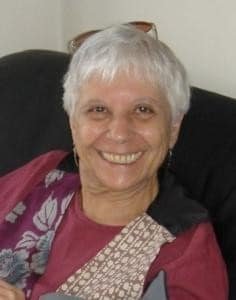The Kabbala, the mystical body of Judaism, flourished in Spain and was later developed by Sephardic Rabbis in Palestine. Its influence spread back to Europe, where it led indirectly to the founding of the Hassidic movement in Poland. The Kabbala affirms the power of the subconscious mind, maintaining, for instance, that when a person carries out a good deed, s/he not only improves her or his own character and does good for society in general but also brings light and blessing into worlds which are hidden from our direct perception. Conversely, an evil act will not only cause specific harm, but create bad emanations which will influence these invisible worlds. As a feminist, I find it exciting that the Kabbala is one of the causes of the pain of present existence is the alienation of the masculine from the feminine in Good, the alienation of god and the Shekhinah (the feminine aspect of God). The world will not be whole until this split is healed. Reunification of God and the Shekhinah, which the Kabbala encourages us to dedicate our effort to, is the precondition for the end of alienation. 4
In 1492, when the edict of expulsion was enacted, 200.000 Spaniards – men, women and children, rich and poor, aged and young, sick ah healthy – were driven out of Spain. Many went ti Portugal, where 5 years later the same tragedy took place. Many Jews became Christians outwardly but continued to practice Judaism in secret. Known as “New Christians”, “Marranos” or “Conversos”, they were under constant scrutiny of the Inquisition. Women comprised the vast majority of those few who maintained their Judaism and died the deaths of martyrs. According to Cecil Roth, women became the spiritual leaders of the Conversos groups. 5
was enacted, 200.000 Spaniards – men, women and children, rich and poor, aged and young, sick ah healthy – were driven out of Spain. Many went ti Portugal, where 5 years later the same tragedy took place. Many Jews became Christians outwardly but continued to practice Judaism in secret. Known as “New Christians”, “Marranos” or “Conversos”, they were under constant scrutiny of the Inquisition. Women comprised the vast majority of those few who maintained their Judaism and died the deaths of martyrs. According to Cecil Roth, women became the spiritual leaders of the Conversos groups. 5
Of the Jews who left Spain and Portugal, many were sold as slaves by the captains of the same ships that were supposed to rescue them; many died of illnesses and exhaustion during their escape. Those who survived spread through the Mediterranean and Northern Europe.
According to my father, our ancestors stopped in Livorno, Italy for a couple of generations – which explains our Italian name – and then settled in Turkey, where the Sultan Bayazid II was eager to accept the Jews. Jews brought invaluable commercial skills and knowledge of various languages and sciences. Many had risen to high military ranks in the Spanish army, and the Sultan wanted them to teach advanced military science to his officers. They introduced the use of gunpowder and the manufacture of cannon into Turkey. The Sephardim formed communities that kept their language, customs and traditions.
As in other Jewish communities there were clear roles for women and men. The women had to direct sy in community affairs; their husband ran the businesses and studied the Talmud. But the survival of the community depended heavily on the women fulfulling their roles in the home. Lighting Sabbath candles and keeping a kosher kitchen ensured the continuity of Jewish life in the new land well before the community organized itself in a more formal way.
Of the many women who achieved notoriety in Europe and the Ottoman Empire for their philarmonic and business activities, none has captured my imagination and curiosity more than Doña Gracia Nasi (1510 – 1569), aldo known by her Christian name,Beatrice de Luna. A woman of incrdible vision, intelligence and trengh, Doña Gracia was born to a very prosperous Converso famuly in Portugal. Her brother was physician to the king. At 18, she married Francisco Mendes, also from a Converso family, and a succesful dealer in precious stones, spices and international trade. The position of the Conversos was very tenuous in Lisbon; for in 1515 the king had applied to Rome for the introduction of the Inquisition. The Mendes family began plans to emigrate and to transfer the family business to Antwerp. Where they could practice their religion openly. But in 1536, the same year that a papal brief ordered the establishment in Portugal of ha Holy Office of the Inquisition, Francisco Mendes died and Gracia was left a widow at 26 with a small child, her sister, and her brother’s son first to England and then to Antwerp, where in 1537, she joined her brother in law. Whit him she attempted to convince the Pope to stop the Inquisition in Portugal while she helped many other Conversos, flee.
In Antweep Doña Gracia Nassi was in touch with royalty, accepted in high circles. But fearing reprisals because she denied a Catholic nobleman’s request for her daughter’s hand, she left Antwerp in 1544 and went to Venice. There her own sister denounced her as a Jew, and she was imprisoned until pressure from Sultan Suleiman the Magnificent resulted in her release. From Venice she went to Ferrara, where she openly and proudly proclaimed herself a Jew and organized a true “underground railroad” to help Jews fleeing the Inquisition, using her agents and representation as “stations”. She became a patron of letters: The famous Ferrara Bible, published in Spanish by two Conversos, is dedicated to her. This bible was essential to sustain the faith of many Conversos who wanted to return to Judaism but understood only Spanish. In 1552, Doña Gracia left Ferrara and Settled in Constantinople, where she helped the poor and established houses of prayer, schools, and Talmudic academies.
While living in Turkey she embarked on two Projects that established her as a woman of foresight, well beyond her times. In 1556, Pope Paul IV persecuted the Conversos f Ancona; 24 of them were strangled and then burned. Doña Gracia organized a boycott of the city by the Jewish merchants in Turkey, who used Ancona and their point of entry for goods shipped to Europe. She planned to ruin Ancona and cut into papal revenues by substituting Pesaro and the point of entry; a woman against the Pope. Unfortunately the boycott was abandoned after a few months for lack of support from influential Jews like Rabbi Soncino, who opposed her.
Her other project was a plan for the resettlement of Palestine. Aware that a successful community must have a sound economic base, that agriculture, manufacturing and trade must be development, she chose Tiberias as a site for resettlement because of its fertile land, potential fish industry, and rich historical past. Envisioning a refuge for the persecuted Jews of the world, she had mulberry trees planted for a silk industry, had homes restored, and created an environment where people could prosper. She herself had a mansion built near the hot baths, planning to settle there in 1566. But there is no record of her reaching Tiberias, and so we do not know if she fulfilled her desire. The chronicler Samuel Usque called her “the heart of her People”, that being “the principal and noblest organ of the human body, feeling most readily the pain suffered by any other part”.
In the United States the history of the Jewish community began with the arrival of 23 Sephardic Jews, refugees from Recife, Brazil, who founded the congregation Shearith Israel in New Amsterdam in 1654. Another early settlement of Sephardim took place in Newport, Rhode Island, where a synagogue, dedicated in 1763, still stands; the oldest synagogue building in the United States, its simplicity and beauty touched me deeply. Located on a quiet street, the synagogue stands diagonally on its small plot so that the worshippers standing in prayer before the Holy Ark face east, toward Jerusalem.
-.-.-.-.-.-.-
For me, learning the history of the Sephardim has been a strong and helped me understand my feelings of separateness and isolation from Ashkenazi Jews. By creating and disseminating distorted images about Jews, anti-Semitism has also contributed to the invisibility of the Sephardim.
When people ask me why I identify as a Sephardic Jew (and not simply as a Jew), I explain that the Sephardim are invisible in this culture, that we are almost unknown by the majority of the Jews here, and that we have a long and proud history. Indeed, Sephardic history is a history of incredible survival through Inquisition, Diaspora and the Holocaust- Its felt a mixture of anger and relief when I learned that in December of 1968 Spain formally lifted its expulsion order against the Jews. Though long abolished in practice, the decree was still officially in effect!
My raised consciousness as a Sephardic woman has also led me takes a clearer stand on the issue of Judaism and women. Traditional Judaism, which legitimates a hierarchical relationship between the sexes and devaluates female power, clearly did not deter Doña Gracia. More than once I have whispered to myself in a seemingly hopeless and oppressive situation: “You can be like Doña Gracia, too!”
- My Ancestors Speak : To be a Hanúm – Part 1
- My Ancestors Speak: To be a Hanúm – Part 2
- My Ancestors Speak: To be a Hanúm – Part 3
4 Rita M. Gross, “Female God Languaje in a Jewish Context”, in Womanspirit Rising, edited by Carol P. Christ and Judith Plaskow (NY: Harper and Row, 1979
5 Cecil Roth, a History of the Marranos (NY: Schocken Books, 1974).
Fuente: The book: The Tribe of Dina, a Jewish women’s anthology.
We received the book by Gloria Ascher courtesy.
 eSefarad Noticias del Mundo Sefaradi
eSefarad Noticias del Mundo Sefaradi


Hola Rita a lo mejor tenemos raices comunes? Mis abuelos vienen de Esmirna
Seremos algo de Elias Canetti Arditti? El premio nobel